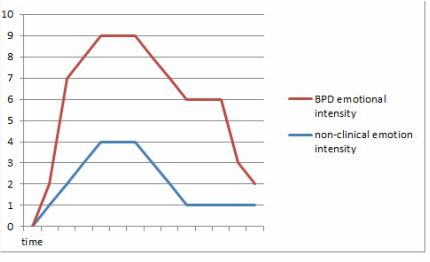What is Borderline Personality Disorder?Borderline Personality Disorder, also known as Emotionally Unstable Personality Disorder, is characterised by a number of difficulties. The NHS describes the difficulties associated with BPD as falling into four areas:
In order to receive a diagnosis of BPD, a person needs to display 5 of the following 9 symptoms:
|
How Dialectical Behaviour Therapy helps DBT works because each of the difficulties associated with Borderline Personality Disorder are targeted by specific interventions as part of the treatment programme. Utilising a combination of individual therapy, group skills coaching and between session telephone coaching, DBT aims to treat all aspects of the disorder as well as building a more meaningful and fulfilling life for clients accessing the therapy. For more information on DBT, please click here. |

=One way of making sense of the emotional intensity associated with Borderline Personality Disorder is to think about how people without a diagnosis (non-clinical individuals) respond to stressful events. As illustrated by the graph, in response to stress, non-clinical individuals' emotional intensity rises sharply, remains high for a short period before coming back down to baseline. For people with a BPD diagnosis, the same event can trigger a huge rise in emotional intensity which remains high and sustained for a very long period of time before very slowly returning to baseline. Often the sustained and intense nature of the emotional intensity associated with BPD means that individuals attempt to escape their pain by engaging in harmful behaviours such as self-harm. Whilst in the short term self-harm decreases the intensity of emotions, in the long term individuals are more vulnerable to stress and unable to learn new ways of coping.

